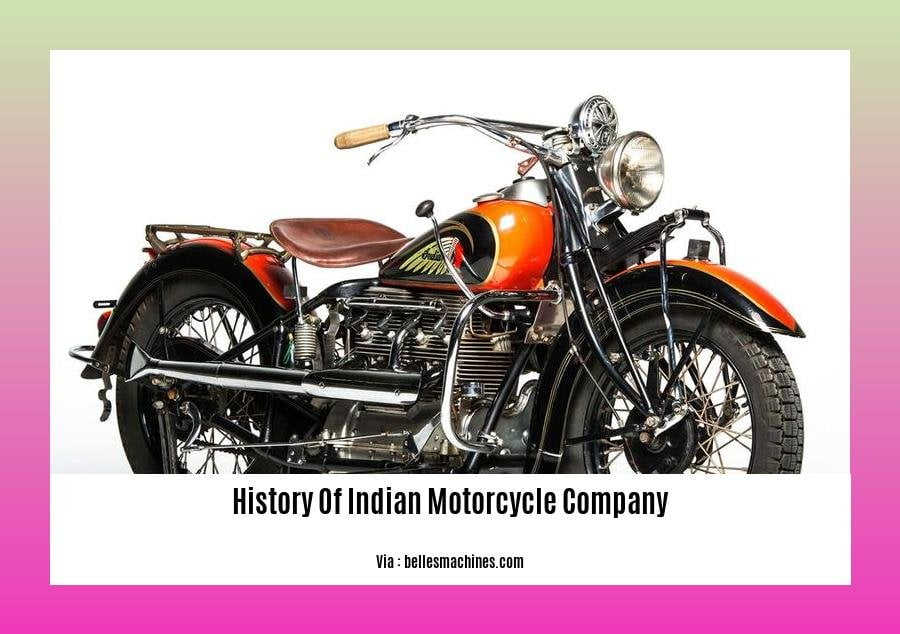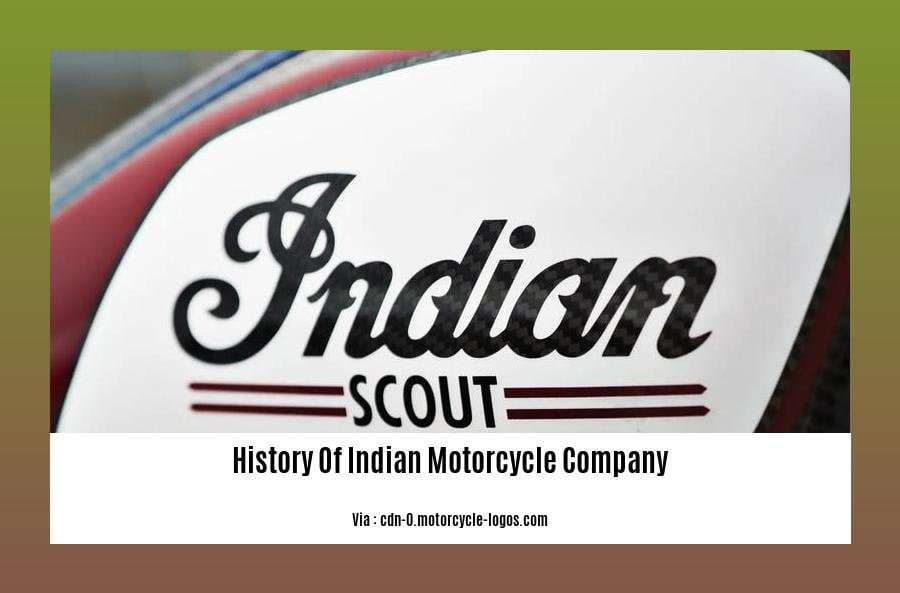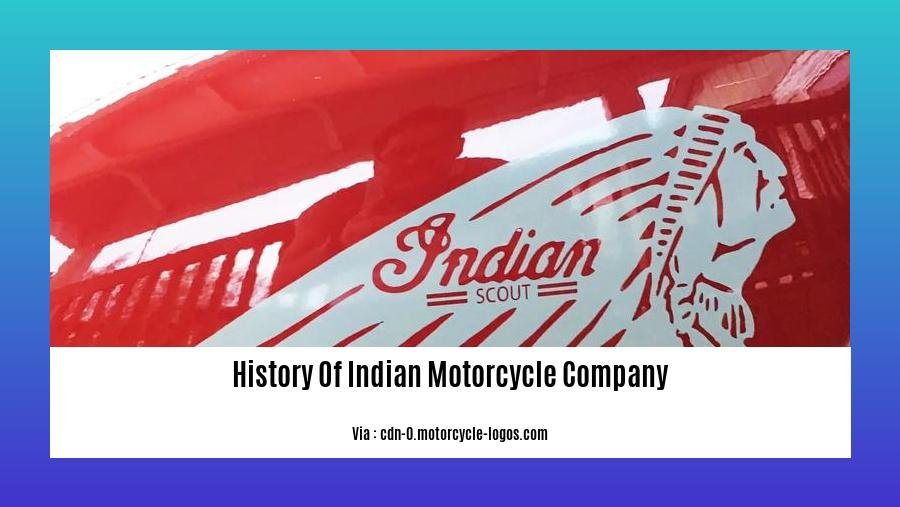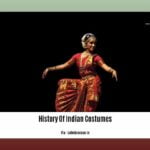Embark on a captivating journey through time as we delve into the storied history of the Indian Motorcycle Company in our article titled “[Tracing the Storied History of Indian Motorcycle Company: A Legacy Unraveled]”. This legendary American brand has left an indelible mark on the world of motorcycling, and we will explore its rich heritage, iconic models, and the passionate community that keeps the Indian spirit alive.
Key Takeaways:
Indian Motorcycle Company was founded in 1901 by George Hendee and Oscar Hedstrom, initially starting as a bicycle company.
Indian motorcycles played a vital role during World War I, serving both the US and British armies.
The original company faced bankruptcy in 1953 but was later revived.
Modern Indian Motorcycles combine classic design with high-performance engines.
After the original company’s dissolution, various entities attempted to use the Indian brand name, leading to the emergence of two distinct groups selling imported motorcycles under the Indian name.
History of Indian Motorcycle Company

Indian Motorcycle Company, an iconic American motorcycle brand, has a rich and storied history that spans over a century. Let’s delve into the fascinating journey of this legendary motorcycle manufacturer, exploring its humble beginnings, remarkable achievements, and enduring legacy on the world stage.
A Revolutionary Spark: The Genesis of Indian Motorcycles
In 1901, George Hendee and Oscar Hedstrom, driven by their passion for speed and innovation, founded the Indian Motorcycle Company in Springfield, Massachusetts. Hendee, a former bicycle racer, envisioned creating a motorized bicycle that combined power, reliability, and versatility. Their shared vision sparked the birth of the very first Indian motorcycle, the Indian Single.
Pioneering the Trails: Indian Motorcycles in the Early Years
Indian quickly gained recognition for its innovative designs and high-quality craftsmanship. The company’s motorcycles were not only powerful and durable but also surprisingly user-friendly, making them a popular choice among both recreational riders and adventure seekers.
Indian’s reputation soared as its motorcycles triumphed in numerous races and endurance tests, showcasing their exceptional performance and reliability. One notable achievement was the Indian’s victory in the 1911 Isle of Man TT races, a prestigious international motorcycle competition.
World War Triumphs and Beyond: Indian Motorcycles in the Great Wars
During World War I, Indian motorcycles played a crucial role, serving both the US and British armies. Their ruggedness and adaptability made them ideal for military use, transporting troops, carrying supplies, and facilitating communication on the battlefields.
After the war, Indian continued to innovate and expand its product line, introducing new models like the iconic Indian Chief and the lightweight Indian Scout.
Facing Challenges and Reviving the Legacy
The Great Depression and World War II brought significant challenges for the company, leading to a decline in sales and production. In 1953, Indian Motorcycle Company filed for bankruptcy and ceased operations.
However, the legacy of Indian motorcycles lived on. In 1998, a group of enthusiasts, passionate about preserving the brand’s heritage, revived the Indian Motorcycle Company. They meticulously recreated classic Indian models and introduced new ones, blending traditional styling with modern technology.
Modern Indian Motorcycles: A Resurgence of an American Icon
Today, Indian Motorcycle Company continues to thrive, producing high-performance motorcycles that embody the spirit of the original Indian machines. With a focus on craftsmanship, innovation, and a deep respect for its history, Indian motorcycles remain a symbol of American pride and independence.
The company’s unwavering commitment to quality and heritage has earned it a loyal following among motorcycle enthusiasts worldwide. Indian motorcycles continue to be celebrated for their timeless design, exceptional performance, and the unique story that unfolds with every ride.
Are you intrigued by the rich history of Ibadan? Delve into the depths of its past and explore its evolution through the ages by clicking here: History of Ibadan.
Embark on a journey through time as you discover the fascinating history of Indian clothing, from ancient origins to contemporary trends. Explore the evolution of fashion and cultural influences that have shaped this vibrant art form: History of Indian Clothing.
Unveiling the rich heritage of Indian costumes, we invite you to delve into the captivating history that lies behind each intricate design. Discover the stories, traditions, and cultural influences that have shaped these vibrant expressions of artistry: History of Indian Costumes.
History buffs, rejoice! Unravel the captivating history of the Indian Orthodox Church, from its ancient roots to its contemporary presence. Explore the fascinating journey of faith, tradition, and community that has shaped this vibrant religious institution: History of Indian Orthodox Church.
Challenges and Setbacks: The Great Depression and World Wars
The Great Depression’s Impact on Indian Motorcycle Company
The Great Depression, a worldwide economic crisis that began in the late 1920s, had a major impact on the Indian Motorcycle Company. As the economy collapsed, demand for motorcycles plummeted, and the company struggled to stay afloat. In 1930, the company declared bankruptcy and was bought by a group of investors.
The new owners tried to revive the company, but the Depression continued to drag on, and the motorcycle market remained depressed. Indian motorcycles remained popular with enthusiasts, but the company struggled to sell enough bikes to make a profit and laid off workers to stay afloat.
World War II and the End of Indian Motorcycle Company
In 1941, the United States entered World War II, and the Indian Motorcycle Company began producing motorcycles for the war effort. The company’s motorcycles were used by the US military in various roles, including reconnaissance, dispatch, and troop transport.
The war effort helped keep the company afloat, but it also took a toll on its resources. By the end of the war, the company was exhausted and in debt. In 1953, the Indian Motorcycle Company declared bankruptcy for the second time and ceased operations.
Key Takeaways:
- The Great Depression led to a sharp decline in demand for motorcycles, causing financial difficulties for the Indian Motorcycle Company.
- The company declared bankruptcy in 1930 and was bought by a group of investors who tried to revive it.
- Despite the efforts of the new owners, the company continued to struggle during the Depression.
- World War II provided a temporary boost for the company as it produced motorcycles for the war effort. Still, the war also took a toll on its resources.
- In 1953, the Indian Motorcycle Company declared bankruptcy for the second time and ceased operations.
- In 1998, a group of enthusiasts revived the Indian Motorcycle Company, recreating classic models and introducing new ones.
- Today, Indian Motorcycle Company is once again a successful motorcycle manufacturer, with a loyal following of riders who appreciate its rich history and iconic motorcycles.
Sources:
- Indian Motorcycle: A History of America’s First Motorcycle Company
- The Great Depression and the Motorcycle Industry
Revival and Resurgence: The Modern Era and Polaris Ownership

In the realm of iconic American motorcycles, Indian Motorcycles stand tall, their rich history marked by both triumphs and trials. After enduring a challenging period that led to bankruptcy in 2003, the brand’s fortunes took a dramatic turn in 2011 when it was acquired by Polaris Industries, a renowned player in the powersports industry.
Key Takeaways:
Indian Motorcycle’s revival under Polaris Industries marked a turning point in its history.
The collaboration between Indian Motorcycle and Polaris Industries led to the introduction of new models, such as the Chief, Scout, and FTR, which garnered critical acclaim.
Polaris Industries’ resources and expertise played a crucial role in propelling Indian Motorcycle’s resurgence and regaining its popularity among motorcycle enthusiasts.
The focus on heritage, innovation, and customer engagement, coupled with strategic marketing initiatives, contributed to Indian Motorcycle’s successful comeback.
Indian Motorcycle’s resurgence serves as a testament to the enduring legacy of the brand and the power of collaboration in revitalizing iconic marques.
Under the stewardship of Polaris Industries, Indian Motorcycle underwent a remarkable transformation, characterized by a renewed focus on its heritage, a commitment to innovation, and a deep understanding of its customer base. The collaboration between these two industry stalwarts resulted in a series of strategic moves that propelled Indian Motorcycle back into the spotlight.
Reimagining the Classics:
Polaris Industries recognized the importance of preserving Indian Motorcycle’s rich heritage while simultaneously adapting to the demands of modern riders. The company invested heavily in research and development to create motorcycles that remained faithful to the brand’s DNA while incorporating cutting-edge technology and contemporary design elements.
Introducing New Models:
The launch of new models under Polaris’ ownership marked a significant milestone in Indian Motorcycle’s revival. The Chief, Scout, and FTR models garnered widespread acclaim for their distinctive styling, powerful performance, and exceptional handling. These motorcycles not only appealed to traditional Indian enthusiasts but also attracted a new generation of riders who were drawn to the brand’s heritage and modern appeal.
Innovation and Collaboration:
Polaris Industries’ extensive experience in the powersports industry proved invaluable in propelling Indian Motorcycle’s resurgence. The company’s expertise in engineering, manufacturing, and marketing played a pivotal role in developing high-quality motorcycles that met the expectations of discerning riders. The collaboration between Indian Motorcycle and Polaris Industries led to the creation of motorcycles that were both technologically advanced and true to the brand’s legacy.
Marketing and Community Engagement:
Polaris Industries understood the importance of engaging with Indian Motorcycle’s loyal fanbase and attracting new enthusiasts. The company implemented strategic marketing campaigns that highlighted the brand’s rich history, showcased its new models, and fostered a sense of community among riders. Indian Motorcycle events, rallies, and rides played a crucial role in strengthening the brand’s connection with its customers and building a vibrant community of passionate riders.
The combined efforts of Polaris Industries and Indian Motorcycle led to a remarkable turnaround for the iconic American brand. Indian Motorcycle’s resurgence is a testament to the power of collaboration, innovation, and a deep understanding of the brand’s heritage. Today, Indian Motorcycle stands as a symbol of American craftsmanship, engineering excellence, and the enduring spirit of the open road.
Sources:
The History of Indian Motorcycle’s Engines (1901-2023)
Legacy and Impact: Indian Motorcycles in American Culture and History
The Birth of an Icon: 1901-1920
Indian Motorcycle Company, with its roots in Springfield, Massachusetts, was conceived in the brilliant minds of George Hendee and Oscar Hedstrom. Their quest to craft a sturdy motorbike gave birth to the Indian Single, marking the dawn of their legendary journey in 1901. Indian Motorcycles swiftly gained renown for their robustness, reliability, and adaptability, catering to the needs of both recreational riders and intrepid adventurers alike.
Pioneering Victories and Global Recognition: 1920-1930
Indian Motorcycles left an indelible mark on the world of motorsports, etching their name into the annals of history. Their triumph at the prestigious Isle of Man TT races in 1911 cemented their reputation for unparalleled performance and dependability. Their motorcycles became the steed of choice for both civilian and military riders, with the U.S. Army adopting the Indian Powerplus engine for their fleet during World War I. This strategic alliance further solidified Indian Motorcycles’ status as a symbol of American ingenuity and resilience.
Navigating Economic Headwinds and Reviving the Legend: 1930-1998
The Great Depression, a period of profound economic turmoil, brought formidable challenges to Indian Motorcycle Company. Despite their valiant efforts to weather the storm, the company succumbed to financial pressures and ceased production in 1953. However, the legacy of Indian Motorcycles refused to fade into obscurity. In 1998, a group of passionate enthusiasts, driven by a deep reverence for the brand’s heritage, breathed new life into Indian Motorcycle Company, heralding a remarkable revival.
Resurgence and Innovation: 1998-Present
Under the stewardship of its new custodians, Indian Motorcycle Company embarked on a path of resurgence and innovation. They meticulously recreated iconic models, such as the Chief and the Scout, while simultaneously introducing cutting-edge designs like the FTR. These remarkable motorcycles garnered critical acclaim for their exceptional performance, head-turning aesthetics, and unwavering commitment to quality. Indian Motorcycles had successfully recaptured the hearts of riders worldwide, firmly reasserting their position as a preeminent force in the world of motorcycling.
Key Takeaways:
In 1901, Indian Motorcycle Company emerged as a pioneer in the American motorcycle industry, leaving a lasting impact on the nation’s automotive landscape.
Indian Motorcycles gained widespread recognition for their durability, reliability, and versatility, catering to a diverse range of riders.
The company’s remarkable achievements in motorsports, including their triumph at the Isle of Man TT races, solidified their reputation for exceptional performance and dependability.
During World War I, Indian Motorcycles played a crucial role, serving as the trusted steed for both the U.S. and British armies.
Despite facing the challenges of the Great Depression and World War II, the legacy of Indian Motorcycles endured, leading to its triumphant revival in 1998.
Under its new ownership, Indian Motorcycle Company showcased its commitment to innovation, introducing cutting-edge models that harmoniously blend heritage with modern design.
Today, Indian Motorcycles stands as a symbol of American ingenuity, craftsmanship, and a rich legacy that continues to capture the imagination of riders worldwide.
Sources:
FAQ
Q1: How did Indian Motorcycle Company come into existence?
A1: Indian Motorcycle Company, initially known as Hendee Manufacturing Company, was founded in 1901 by bicycle racers George Hendee and Oscar Hedstrom.
Q2: What factors contributed to Indian Motorcycle’s early success?
A2: Indian Motorcycle’s initial success was primarily driven by the innovative 42-degree V-twin engine designed by Oscar Hedstrom, which offered superior power and reliability compared to competitors.
Q3: How did Indian Motorcycles play a role in World War I?
A3: During World War I, Indian Motorcycles gained recognition when the U.S. Army adopted the company’s Powerplus engine for its military motorcycles.
Q4: What challenges did Indian Motorcycle Company face, leading to its initial demise?
A4: The Great Depression severely impacted Indian Motorcycle, causing the company to cease production in 1953 due to declining sales and financial difficulties.
Q5: How did Indian Motorcycle Company make a comeback?
A5: The Indian Motorcycle brand was revived in 1998 by a group of enthusiasts who acquired the rights to the name and logo. Under new ownership, the company introduced successful models like the Chief, Scout, and FTR, leading to a resurgence in popularity.
- SYBAU See You Baby Meaning: Gen Z Slang Evolves - July 1, 2025
- Unlock Your Inner Youth: Lifestyle Secrets for a Vibrant Life - July 1, 2025
- Decode SYBAU Meaning: Gen Z Slang Explained - July 1, 2025






